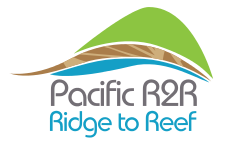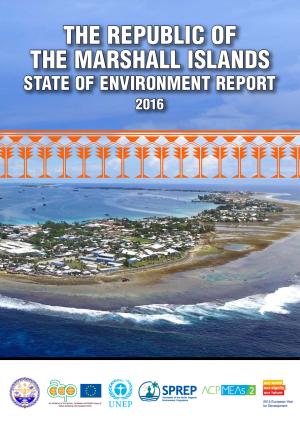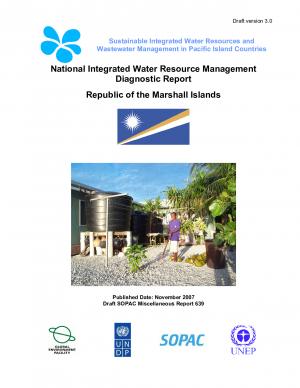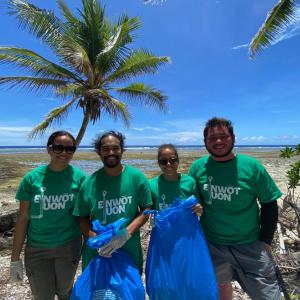
Project Overview
The Republic of the Marshall Islands (RMI) consists of two chains of 29 coral atolls and 5 separate atolls in the North West Pacifc. The southern atolls are characterised by lush vegetation more so than the northern atolls. The majority of the population lives on the two atolls of Majuro and the island of Ebeye in Kwajalein.
Through consultative processes, Laura Village on Majuro was identified as a high priority site because of its groundwater lens. Laura is the third largest population centre and the groundwater supplies 100,000L of water per day to the capital centre of Majuro. Through years of ineffective management it now faces many threats to its quality and quantity. For the RMI as a whole, the supply of natural freshwater is severely limited. The primary source of freshwater is rain, which due to the low elevation of the atolls and islands soaks directly into the soil and disperses into saltwater that permeates atoll subsoils. In some favourable locations some of the freshwater may accumulate in a lens which floats on the saltwater below and can be accessed with wells.
There is a significant groundwater lens at Laura Village on Majuro that is used to supply a large proportion of the capital’s freshwater needs. Other sources of freshwater include community and household rainwater harvesting, desalination and importation, particularly during times of drought. Ebeye has insignifcant groundwater supplies and relies almost entirely on rainwater and desalination.
Insufficient and irregular water supplies are a major concern and throughout RMI supply is not meeting demand. On Majuro the Majuro Water and Sewers Company rations water so that it is only available at certain times and on certain days, drawing water from the groundwater lens at Laura. On Ebeye, water supply is so inconsistent that households often have to resort to hand carrying jugs of water from the Kwajalein base dock across the lagoon.
Contamination is also a major threat to the critical groundwater supplies and coastal ecosystems. In recent years the Environmental Protection Agency (EPA) has increased its water quality testing and has found that a large percentage of household catchments in both rural and urban areas are contaminated. These findings are supported by a high and increasing prevalence of water-related diseases such as dysentery, diarrhea, worms and skin and eye conditions. Sources of contamination include unsanitary roof and guttering systems, animal and human waste and solid waste. In Laura there is increasing concern over the use of agricultural chemical and seepage of poorly constructed or maintained septic systems and piggery waste entering the groundwater lens.
Sanitation severely lags behind water with only 70% improved coverage. Despite a law mandating the use of toilets many households are without improved toilets, with a signifcant proportion of the population defecating in the open. Additionally both urban sewer systems on Majuro and Ebeye dispose raw sewage directly into open water adjacent to populated areas, severely impacting the environment and public health. This trend is especially concerning in dense urban areas and in areas above freshwater groundwater lenses. In these areas there is high potential for contamination of critical resources and disease outbreak.
The above issues have begun to be addressed through the cross-sectoral planning and management initiatives of the
GEF Pacifc IWRM Project. Needs still exist and have been identifed within a Ridge to Reef context. These needs include refned application of locally appropriate on-site waste management systems. This needs to be combined with improved community understanding of waste management issues and increased donor support for householder uptake of on-site sanitation systems. Needs have also been identifed for the integration of targeted scientifc investigation on coastal and land ecosystem processes, local knowledge and strategic partnerships to strengthen knowledge base for key evidence-based Integrated Coastal Management planning and investment.
Project Components:
|
1. Sustained community adoption of appropriate on-site waste management systems to reduce contaminant impacts on environmental and public health at Laura Village 2. Integrating targeted scientific investigation on coastal and land ecosystem processes, local knowledge and strategic partnerships to strengthen knowledge base for key evidence-based ICM planning and investment 3. National and local management planning for integrated land, water and coastal management for sustainable livelihoods at Laura |
Project Contacts

IW R2R Project Manager
[email protected]




















